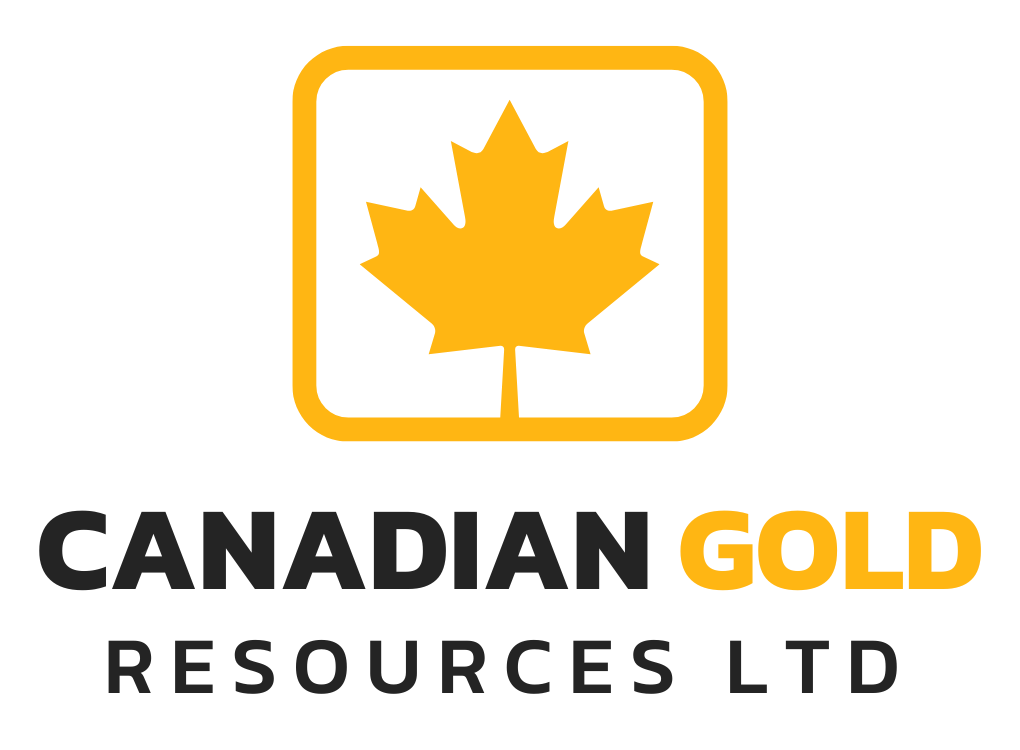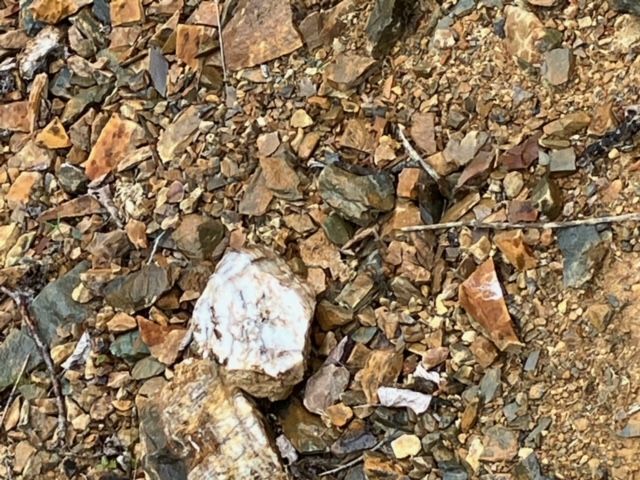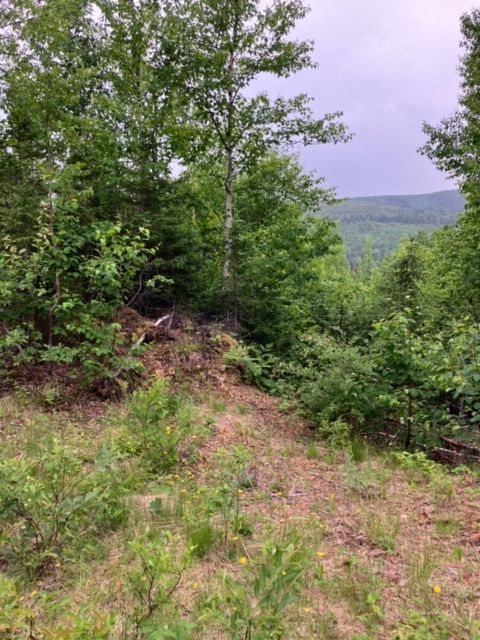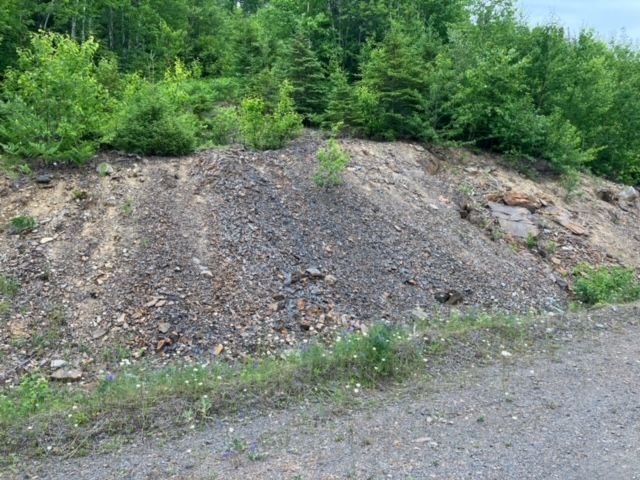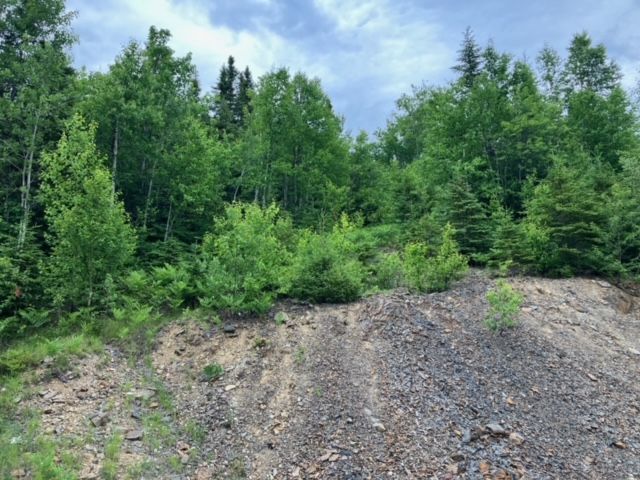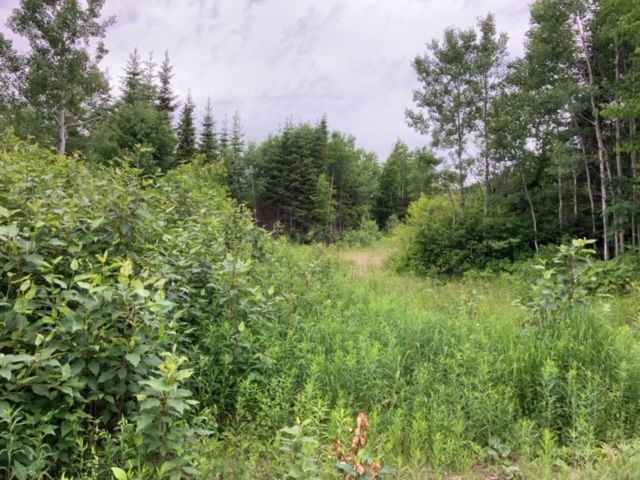Lac Arsenault
Lac Arsenault is Our Flagship Project, with a Bulk Sample Projected to Yield 4,000 oz of Gold.*
Project Summary
In 1946 Walter Baker, a prospector, discovered boulders containing gold, silver and the sulphides sphalerite, galena, arsenopyrite and pyrite. This property was explored by Imperial & Esso Minerals in the mid 1970's who identified resources of 40,000 tonnes at 15.43 g/t Au, 197.00 g/t Ag, 6.6% Pb and 3.5% Zn in three veins exposed at surface. This was reevaluated in a 1996 report to 199,580 tonnes at 9.59 g/t Au or approximately 61,536 ounces of gold. (Historical estimates not yet verified under NI 43-101 standards – further work is underway to validate and confirm this estimate.) Historic assays of up to 1.4 oz Au/ton and 25 oz Ag/ton have been recorded. Base metal ranges from traces up to 15 percent combined Pb-Zn. Best results include 32.83 g/t Au over 0.27 m at the Baker vein. Best results from the southern part of the L4W vein include 13.5 g/t Au over 0.75m. Best results at the Mersereau vein include 39.7 g/t Au on surface. In 1986 an exploration program discovered a new Au bearing zone, Marleau vein, with an assay of 0.36 oz Au/t over 5.2 feet. The Lac Arsenault property has 93 historic drill holes totaling 7,269.41m.
Near-Term Cash Flow Potential
7,780 Hectares
100% Owned
93 Historic Drill Holes
The Lac Arsenault project is located in the Gaspé Peninsula of Quebec, approximately 25 kilometers north of Paspebiac and 58 kilometers from Bonaventure, covering a total of 7,780.6 hectares. The property benefits from convenient access via well-maintained gravel roads, ensuring year-round availability for exploration activities. The region’s temperate climate extends the exploration season, allowing for efficient operations across most of the year.
Bonaventure, located 58 kilometers south, serves as a regional transportation hub with an airport offering regular flights to and from Montreal, as well as connections throughout the Gaspé Peninsula. This proximity facilitates the movement of personnel and smaller equipment, while Bonaventure also provides essential services, accommodations, and supplies, making it well-suited for supporting extended exploration efforts. Additionally, Bonaventure hosts a range of tourist camps that cater primarily to hunters and fishermen, providing lodging options for seasonal workers and field staff.
For larger logistical needs, Port-Daniel—a deep-water sea port on the Bay of Chaleur—is situated about 73 kilometers south of the property, offering support for the shipping of bulk samples and materials. Furthermore, the Canadian National (CN) railway line runs through the Gaspé Peninsula, linking Lac Arsenault to broader shipping routes and reducing transportation costs for future mining operations.
Nearby towns such as Paspebiac and Bonaventure provide access to a skilled labor force familiar with mining operations, and offer essential infrastructure including food, fuel, and specialized equipment suppliers. Additionally, local water resources are available on the property, sufficient to sustain both exploration and potential future mining activities. Together, these advantages make Lac Arsenault’s location ideal for exploration and eventual project development, with efficient access to the essential infrastructure and services required for sustained operations.
Location & Infrastrucuture
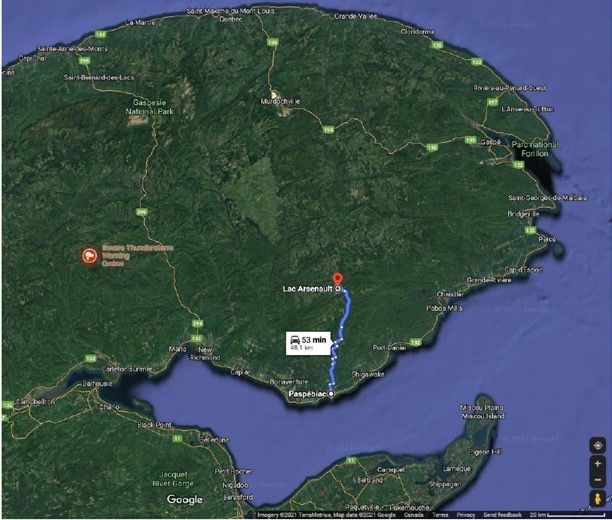
The Lac Arsenault property boasts a robust exploration history since its discovery by prospector Walter Baker in 1946. Early work by Imperial & Esso Minerals in the 1970s identified high-grade material across three primary veins (Baker, Mersereau, and L4W), with historical estimates indicating 40,000 tonnes grading 15.43 g/t Au, 197 g/t Ag, 6.6% Pb, and 3.5% Zn. In the 1990s, further calculations by geologists Peter Smith and Peter Hawley estimated a historical resource totaling up to 220,042 short tons at 0.307 oz/ton Au, although these figures are non-compliant with current NI 43-101 standards.
Recent exploration by Ressources Appalaches, 1844 Resources Inc., and others has focused on defining high-grade zones through drilling, channel, and grab sampling. Highlights include drilling intercepts of 7.2 g/t Au over 3m from the Baker vein and 17.9 g/t Au with 201 g/t Ag over 0.3m from the Mersereau vein. Surface sampling has confirmed bonanza-grade zones, such as 32.83 g/t Au over 0.27m in the Baker zone and 39.7 g/t Au in the southern Mersereau zone, underscoring the property’s potential for substantial gold mineralization.
Key Historical Results:
- Baker Vein: Assays of up to 32.83 g/t Au over 0.27m.
- Mersereau Vein: Surface samples with up to 39.7 g/t Au.
- L4W Vein: 13.5 g/t Au over 0.75m.
- Marleau Vein: Discovered in 1986, with assays of 0.36 oz/t Au (12.34 g/t Au) over 5.2 feet (1.58m).
Historical exploration includes trenching, soil sampling, and 93 drill holes totaling 7,269m. These exploration efforts have shown consistent high-grade gold and base metal mineralization, highlighting the project’s significant potential for development.
Historic Exploration
Mark T. Smethurst, P.Geo., a director of Canadian Gold. is a qualified person as defined by NI 43-101 and has reviewed and approved the contents and technical disclosures of this website.
* Based on a USD $1,800 Gold Price. This is forward-looking info (FLI). Readers are advised to refer to the full forward-looking statement contained in our Terms & Conditions for important details regarding assumptions, risks, and uncertainties associated with such information.
Canadian Gold Resources plans to conduct a bulk sample at the Lac Arsenault property in 2025, aiming to produce approximately 4,000 ounces of gold at an 80% recovery rate, which is expected to generate * CAD $9 million in revenue. The bulk sample results will guide further exploration activities, including trenching, soil sampling, and additional drilling to increase resource potential across the property. A follow-up drilling program will target high-grade zones within known vein systems, complemented by geophysical surveys to identify new exploration targets and enhance the understanding of the property's structural geology.
Upcoming Exploration
Bulk sample projected to yield 4,000 oz of gold, generating *CAD $9 million in revenue.
Follow-up drilling to further test high-grade zones along known vein systems.
Geophysical surveys to identify new exploration targets and improve geological understanding.
Gallery
Stay Updated With Canadian Gold
Sign up for our newsletter to receive news releases and exclusive company updates.
Thank you for subscribing to Canadian Gold Resources Mailing List.
Oops, there was an error sending your message.
Please try again.
